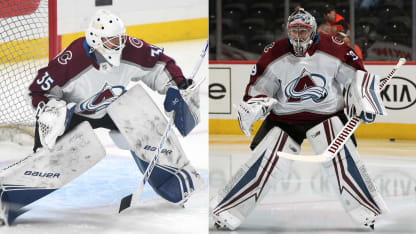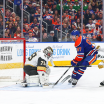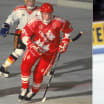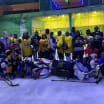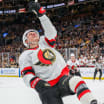Statistically, it would be hard to compare the success of right-hand goalies with their left-hand catching counterparts without being able to account for the quality of the shots each faced.
Anecdotally, there don't appear to be any significant disadvantages to playing as a right-hand catching goalie.
Tomas Vokoun, who played 700 NHL games over 15 seasons from 1997 to 2013, said catching with his right hand in 2007-08 was an advantage because there were more left-handed shooters (552 to 300), so they came in with the puck on his glove side.
Lindgren, who has started six games for the Montreal Canadiens this season, said it can confuse shooters.
"You talk to players and it totally messes them up, especially breakaways," Lindgren said. "They usually they like going low blocker, and I've got my glove there, so if anything, it benefits me. At least that's what they say."
This could simply be a down cycle for right-hand catching goalies, one that will turn around as the likes of Francouz, who is 21-7-4 with a 2.41 goals-against average and .923 save percentage in his first NHL season, and Petersen, who is 5-3-0 with a 2.64 GAA and .922 save percentage as a rookie with the Los Angeles Kings, earn more starts.
Yaroslav Askarov, a right-hand catching goalie who currently plays for Neva St. Petersburg (RUS-2), is also expected to be the first goalie selected in the 2020 NHL Draft. Some scouts believe he is the best goalie prospect since Carey Price in 2005.
Still, it's hard to ignore the decline from 2009-10, when eight goalies combined to make 322 starts, a list led by Vokoun (62 starts), Hiller (58), Steve Mason (55), Deslauriers (48), and Jose Theodore (43).
"Definitely fewer now," Hutchinson said. "When I was in Toronto, I talked to [Frederik] Andersen about switching hands because there's been so few lefty goalies lately that I wanted to just join the masses and start catching normal, so we had a little debate to see how long it would take to feel comfortable switching."
The ability to do so at a young age could help explain at least some of the decline.
Tampa Bay Lightning goalie Andrei Vasilevskiy, who won the 2019 Vezina Trophy, said last season that he had to switch to catching with his left hand because he couldn't get a glove for his right.
